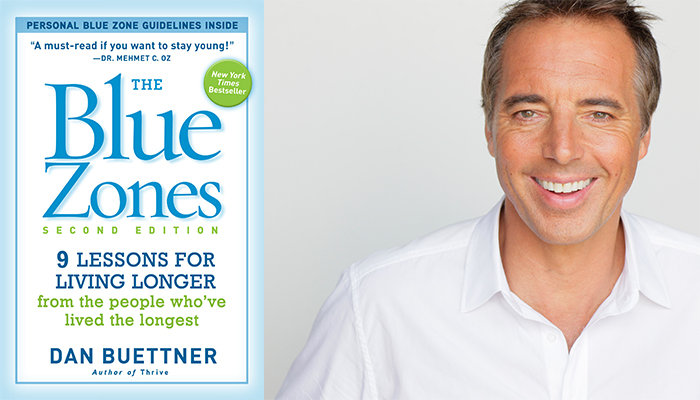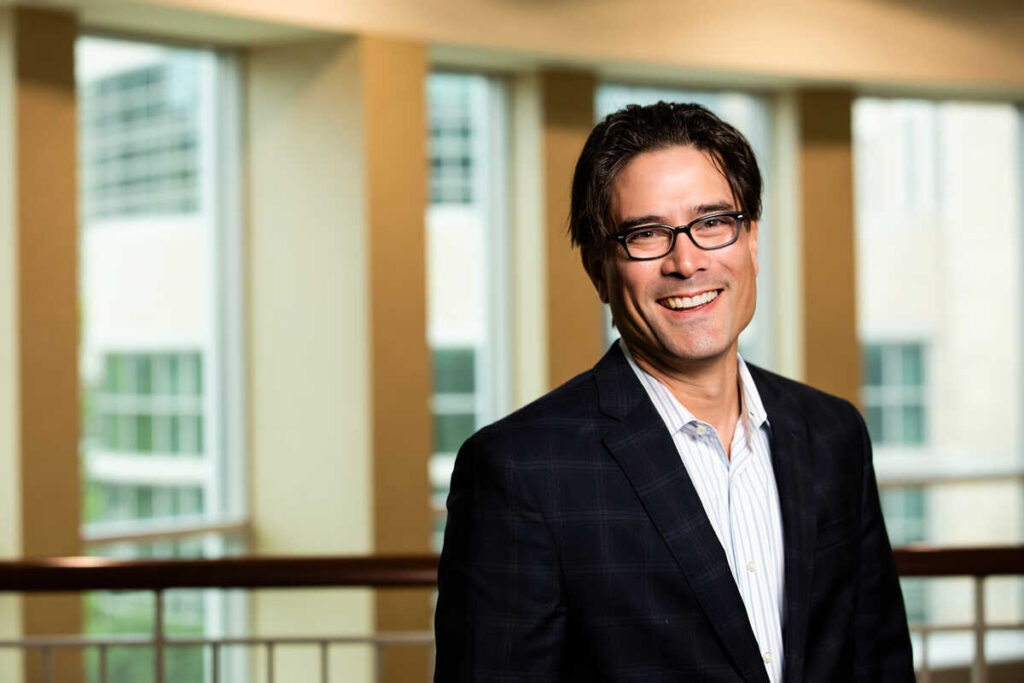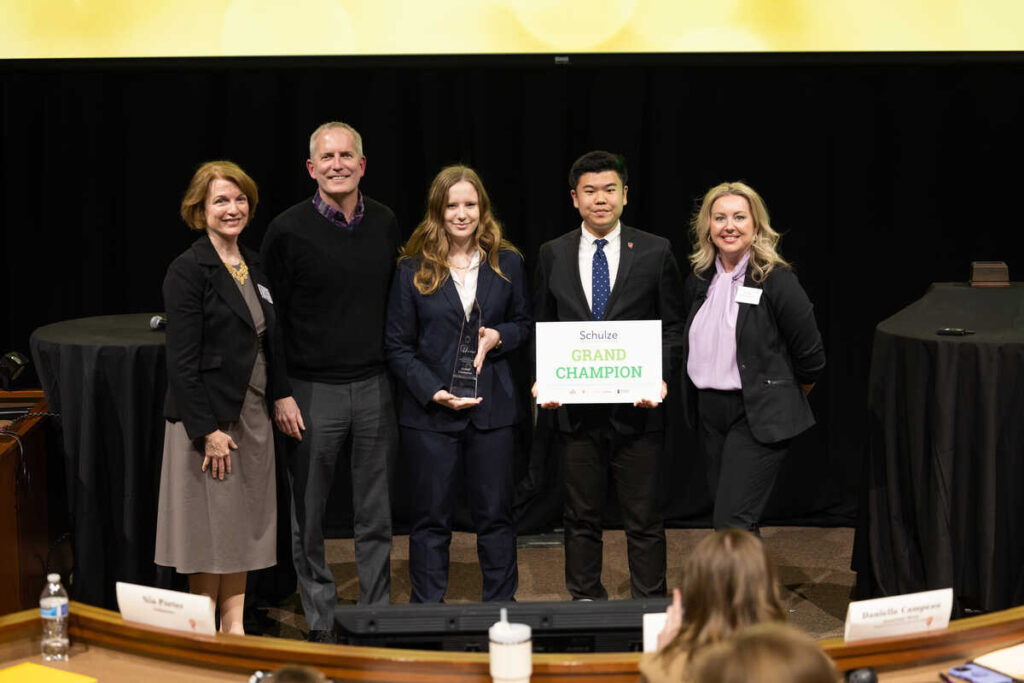Everyone would like to live a long, healthy life. Despite brief forays into wishful thinking, most of us recognize that longevity – and good health – are not going to arrive in the form of a magic pill or the discovery of the long-rumored but elusive Fountain of Youth. Instead, we know, at least in the logical part of our brains, that it is our daily habits, and how we structure our lives, that often have the most impact on our health.
Just what these habits and lifestyles are is the subject of the best-selling book The Blue Zones: Lessons for Living Longer From the People Who've Lived the Longest, written by Dan Buettner ’84. The book, which originated as an expedition for National Geographic, highlights the places around the world where people live the longest, which Buettner terms “Blue Zones.” Many residents of these regions are still full of vigor well into their 80s and 90s; many live to 100 and beyond.
Dan Buettner followed up Blue Zones with Thrive: Finding Happiness the Blue Zones Way and, most recently, The Blue Zones Solution: Eating and Living Like the World’s Healthiest People. And, in addition to the books, Blue Zones has become a full-fledged enterprise with the stated mission of “helping people live longer, better.” In other words, what started as a book is now a far-reaching organization dedicated to putting their discoveries about longevity into action in the form of community initiatives.
Tony Buettner ‘09, vice president of product and business development for Blue Zones, shared the latest on this mission to take the concepts presented in Blue Zones (the book) and create new, real-world Blue Zones, on Friday, October 2 at Master’s Pub, a regular networking and speaker event for Opus College of Business students and alumni.
Buettner first outlined the specific behaviors that make a Blue Zone, well, a Blue Zone, by sharing a list of nine healthy lifestyle habits (referred to as The Power 9©) that can lead to longer (and hopefully happier) lives. These concepts, like “move naturally” and “eat wisely,” are easy enough to understand and may even seem obvious at first glance. But often what’s missing, when individuals try to incorporate them into their daily lives, is an environment – landscapes, workplaces, neighborhoods and even social or governmental policies – that isn’t optimized for success. It isn’t always easy to be healthy in America.
The question becomes, then, how to go about changing that.
Putting Theory into Practice
Enter Albert Lea, Minnesota, which became the pilot project for the Blue Zones initiative in 2009. “We came in to Albert Lea and learned what they were doing well,” Buettner said. “We assessed what they had to offer and we used that as a starting point.”
This meant optimizing existing surroundings for health and well-being, creating what Buettner characterized as an environment in which people were being “relentlessly nudged” to make healthy choices without being nagged or coerced. This meant tweaking spaces and environments, like creating easily-accessible walking paths to connect neighborhoods, downtown and Fountain Lake. It meant identifying green spaces for community gardens, talking to schools about eliminating snacking in the hallways and classrooms (places where students tended to eat junk food) and asking restaurants to reconsider their menus or portion sizes.
Since starting its Blue Zones project, the city has added roughly seven miles of sidewalk additions and two miles of bike lanes. It’s worked to make its downtown a walkable destination, not a place to bypass in a car on the way to someplace else. Blue Zones has recruited 42 worksites, as well as Riverland Community College, to offer healthy choices to workers and students.
“We don’t go into a community to tell them what to do,” Buettner said. “We’re trying to create a perfect storm of well-being. It’s an environment that’s always nudging people to make the healthy choice – and one that makes the healthy choice easy.”
The campaign, funded in part by AARP, is paying off for Albert Lea residents – tobacco use is down 4%, walking has increased 70% and residents lost a collective four tons of weight. The city is now entering a second phase of the project and hoping to achieve Blue Zone certification.
Blue Zone projects like the one in Albert Lea are already in various phases in other U.S. cities, including Houston, Texas, ten communities in Iowa, north central Indiana, Oregon, southwest Florida and Hawaii.
What You Can Do: Implement The Power 9©
Interested in what you can do individually to lead a healthier, longer life? Start by incorporating as many of The Power 9 into your daily life as possible:
- Move naturally. The best way to do this is to walk as often as you can and make enjoyable exercise part of daily life.
- Know your sense of purpose
- Have the right outlook. Find ways to relieve stress and “power down.”
- Eat wisely. Exercise portion control, avoid snacking and over-eating and eat your smallest meal in the late afternoon or early evening.
- Eat a plant-based diet. Enjoy an array of fresh fruits and vegetables.
- Drink wine. The program advocates one glass of wine per day for women; two for men.
- Connect through social circles that promote healthy behaviors and offer support. In Blue Zone-speak these are referred to as moais, a Japanese word that refers to a group of people that uses a social activity to bond, which could be anything from walking to disc golf to book clubs.
- Belong to a faith-based community. According to the program, attending faith-based services four times a month adds four-14 years of life expectancy.
- Put family first. While this can mean many different things to different people, it can include keeping aging parents and grandparents in or near your home to being in a positive, committed relationship.
Join the conversation: the next Master’s Pub: More Than Fantasy Football, featuring Rob Pythian ’83, co-founder and CEO of SportsData, is Friday, November 13.







